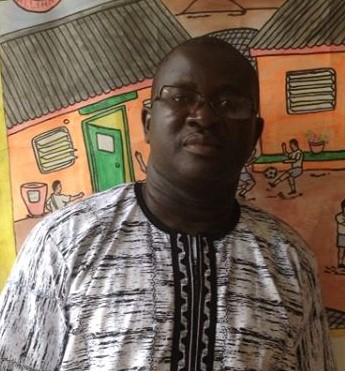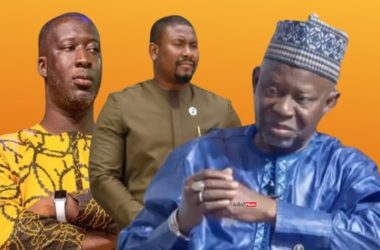
A chilling criticism against the 2020 Draft Constitution, which is gaining currency amongst our intellectuals, lawyers and social commentators, is that it is a ‘plagiarised’ from the 2010 Kenyan Constitution.
While I claim no knowledge of constitutional writing or constitutional development, I disagree with the criticism, one I think is both unfair to the Constitutional Review Commission who gave us a great piece of work after ‘ransacking all the known Constitutions of world ‘ and borrowed their best provisions.
Certainly, these criticisms aren’t new to drafters. When India was doing its 1949 Constitution, prepared by a Constituent Assembly, the criticism was that the Constitution was ‘borrowed’. Dr. Ambedkar, the Chair of the Constituent Assembly and a luminary in his own right, observed:
‘One likes to ask whether there can be anything new in a Constitution framed at this hour in the history of the world.
More than hundred years have rolled when the first written Constitution was drafted. It has been followed by many other countries reducing their Constitutions to writing…. Given these facts, all Constitutions in their main provisions must look similar. The only new thing, if there be any, in a Constitution framed so late in the day are the variations made to remove the faults and to accommodate it to the needs of the country.’
These statement of Dr. Ambedkar, I think, are as valid today as when they were made about seventy-one years.
We framed our draft Constitution in the late evening of the day, when the world and a greater number of her countries had ‘adopted, enacted and given to themselves’ very good instrument of governance. Did the framers of our draft Constitution ‘remove the faults’ and ‘accommodate’ whatever we assumed are ‘borrowed’ or ‘plagiarised’ to the ‘needs of the country’? I bet that is evident.
From the issuance of the Issue Document to the receipt of submissions from Gambians of every walk of life, to the consultations home and abroad, and listening and considering the views of the high and mighty and the low and weak, the draft Constitution certainly reflect the views and aspirations of the Gambian people.
Some of the provisions in the draft Constitution were actually provided by Gambians who made submissions to the drafters. Were there a meeting of minds between Gambians and Kenyans on the commonalties of their aspirations and how they wanted to be governed?
I do not know but like Kenyans, we too had our horrible past, even if not the same, and I think it was a great that we learned from those countries who also went through the gates of tyranny and dictatorship and, like the Phoenix, had a better rebirth.
That our 2020 Draft Constitution is drawn from different, even if substantially from the 2010 Kenyan Constitution, is, I think, one of its outstanding features.
I think a credit we should give the framers of our draft Constitution is their ability to glean the best features of all the world’s Constitutions they reviewed, modified the chosen provisions of these Constitutions to ‘avoid the faults that have been disclosed in their working’, and adapted them to the existing conditions and needs of the Gambia.
As said as a rebuttal to the criticism directed at the Indian Constitution in the 1949s, if ours too is a ‘patchwork’, it is a ‘beautiful patchwork’.
The other argument I hear is that our draft Constitution is too bulky. Could this be a curse or a blessing as we begin its implementation after the adoption at the referendum (my optimism)?
The jury would be out this as lawyers and others, since Public Interest Litigation would be possible, rush to the Supreme Court or the High Court for interpretation or declaration of acts and actions as ultra vires. But is there a prescribed length for a Constitution? The Constitution of India is probably the most detailed and lengthy in the world.
The original contained as many as 395 Articles and 8 Schedules (Ours has 319 Sections and 4 Schedules). On the other hand, the Constitution of the United States of America is probably the shortest in the world. But we know that the American Constitution is the ‘lawyer’s Constitution’ and it is what the Supreme Court says it is.
While I admit I do not know what motivated the framers of our draft Constitution to make ours lengthy and detailed, I would hazard some guesses, as Durga Das Basu highlighted in his book ‘Introduction to the Constitution of India’:
– The framers incorporated the accumulated experiences from the workings of the all the Constitutions they consulted and wanted to avoid all the ‘defects and loopholes’ that might be anticipated in our implementation.
– Our draft Constitution is more full of words because it has embodied the modified results of judicial decisions made elsewhere interpreting comparable provisions, in order to minimize uncertainty and litigation.
– The smooth working of a State in transition might be jeopardized unless the Constitution mentions in details things which are often left to ordinary legislation
– Some of the provisions are of a tentative or transitional nature and will only remain if the National Assembly does not legislate on them.
Finally, should the National Assembly tinker with the draft Constitution? Why should they?
Firstly, the Constitution, any Constitution, is not legislated on, is not an Act of Parliament. In fact, it is the supreme law of the land, one which sets out how the National Assembly itself and other organs of Government must operate. So the National Assembly should not tamper with the draft Constitution.
The Constitution is the people’s, their aspirations and all. The Preamble says it all: ‘We the People of The Gambia…. Adopt, Enact and Give Ourselves and to our future generation this Constitution…’ It is the whole people who act as the ‘Whole House’ to adopt and enact the Constitution, through a referendum.
Truth be told, the framers of our 2020 draft Constitution are amongst the best in their professions and certainly gave us a very good draft we can all be very proud of.
Anyone who has read through the draft Constitution, with an approach analytical and comparative, would accept that it is incomparable in quality and substance to the 1997 Constitution and, my neck on the guillotine, one of the best in any modern, progressive democracies.
It certainly borrowed from the best and therefore contains novel provisions, from the recognition of economic and social rights to the establishment of a constitutional implementation body to ensure the workability of the Constitution.
I salute the Constitutional Review Commission for giving is a great ‘living document’…. How it benefits us all would be in its implementation and enforcement, and how we take ownership of it. The CRC has done their work; it is ours to do now.





